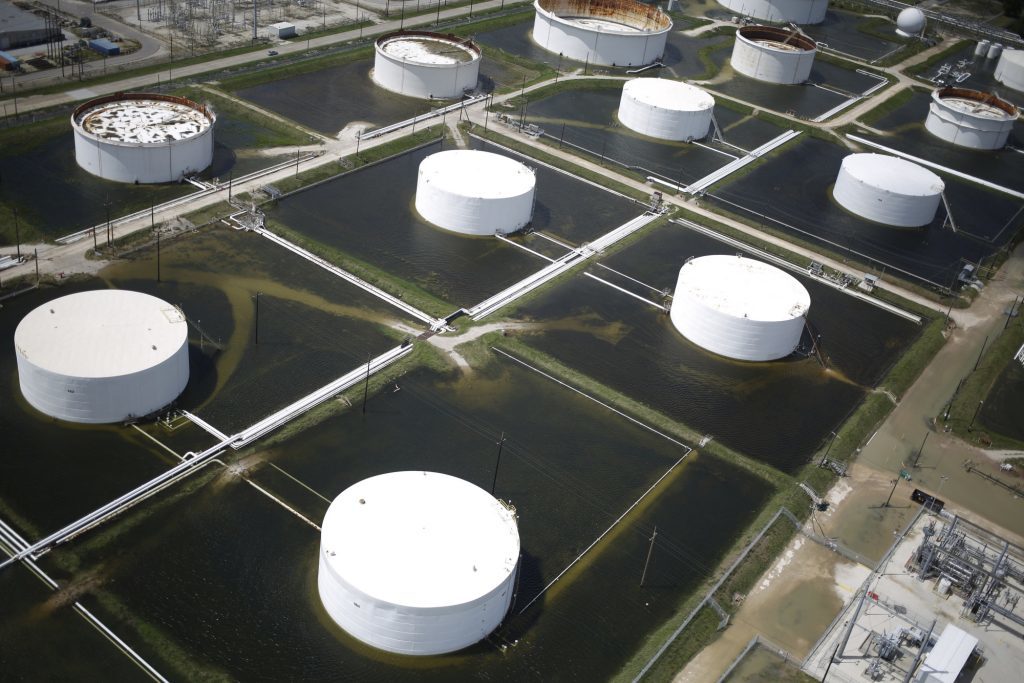
Sometimes, you need a little help from your friends.
As Gulf Coast refiners restart their plants in the wake of Hurricane Harvey, they must step through a complex process that can take days to weeks to complete, even if they were largely unscathed by the storm’s flooding rains.
But first, they need the support of others — third-party suppliers, many of whom have been hit equally as bad by Harvey’s rage. Refiners require adequate supplies of crude oil as a feed stock, nitrogen to dry internal equipment, steam to heat things up and hydrogen to lower sulfur content in their fuel. They also depend on working pipelines, rail cars and terminals to transport their finished products to buyers.
“Unless all those parts of the petroleum supply chain are operating, it’s challenging for refineries to restart,” said Susan Grissom, an analyst at American Fuel & Petrochemical Manufacturers, a refining industry group.
On Wednesday, almost two weeks after Hurricane Harvey made landfall in Texas, five refineries remained shut, the U.S. Department of Energy reported. At least 1.4 million barrels a day could be offline past mid-September, Goldman Sachs analysts said in a report Tuesday.
Meanwhile, many refineries that have reopened have found their schedules slowed as they await important supplies and support. Consider Citgo’s Corpus Christi refinery, which shut ahead of Harvey on Aug. 24 and had plans to begin restarting on Aug. 31. Their startup was delayed as they waited for both services and power, according to a person familiar with the plant’s operations.
Third-Party Suppliers
Citgo relies on suppliers for hydrogen, nitrogen and steam, and they need to remove the mixture of methane, ethane, ethylene, propane, propylene, and butane that’s created by the refinery process and sold to petrochemical plants.
The inability of Calpine Corp. to deliver enough steam to the refinery slowed the startup by several days, the person said. On Wednesday, six days later than originally planned, Citgo finally returned to normal operation.
To read more on Gulf Coast supply chains, click here
Several pipelines that were shut have now resumed operations, including TransCanada Corp.’s MarketLink pipe that carries crude from Oklahoma to Texas and Explorer Pipeline Inc.’s lines that bring refined fuels to Tulsa and Chicago. Having that infrastructure working is a significant first step in getting refineries going again.
The next step: People power. In some cases, staffers are displaced from their homes and it can take them awhile to get back to the job. In others, their access to work has been limited by washed out or flooded roadways.
Inspected, Tested
Once the staffing’s in place, the real work can begin. All equipment and instrumentation will be inspected and tested, focusing particularly on potential water damage, which sometimes can be tough to assess.
“If there was damage, it would be related to flooding, as compared to past events like Hurricanes Rita or Ike, which were very much wind-related,” said Jim McCloskey, vice president of refining and petrochemicals for the fuel manufacturer’s group. “We didn’t have near the power outages experienced in those storms.”
After inspections are completed, operators must dry internal equipment with nitrogen, a necessary step even without flooding because of natural condensation.
At that point, processing units are reheated: Distillation columns, which separate oil, gas and other materials, start their work at 212 degrees Fahrenheit (100 degrees Celsius), the temperature necessary to boil off water. Coker units, used to convert heavy fuel oil into naphtha, petroleum coke and other products, may require temperatures higher than 600 degrees while some furnaces may need to get as high as 900 degrees.
Several Days
Once those temperatures are reached, various units within the plant can finally be brought online, said Eric Smith, associate director at the Tulane Energy Institute. the process can take several days to complete, and two to three weeks to get back to full operations, Smith said in a telephone interview. And it doesn’t always go smoothly.
Often enough, restarts will reveal minor damage missed in the inspections, he said, including leaks. “In the process, maybe some part fails completely,” he said.